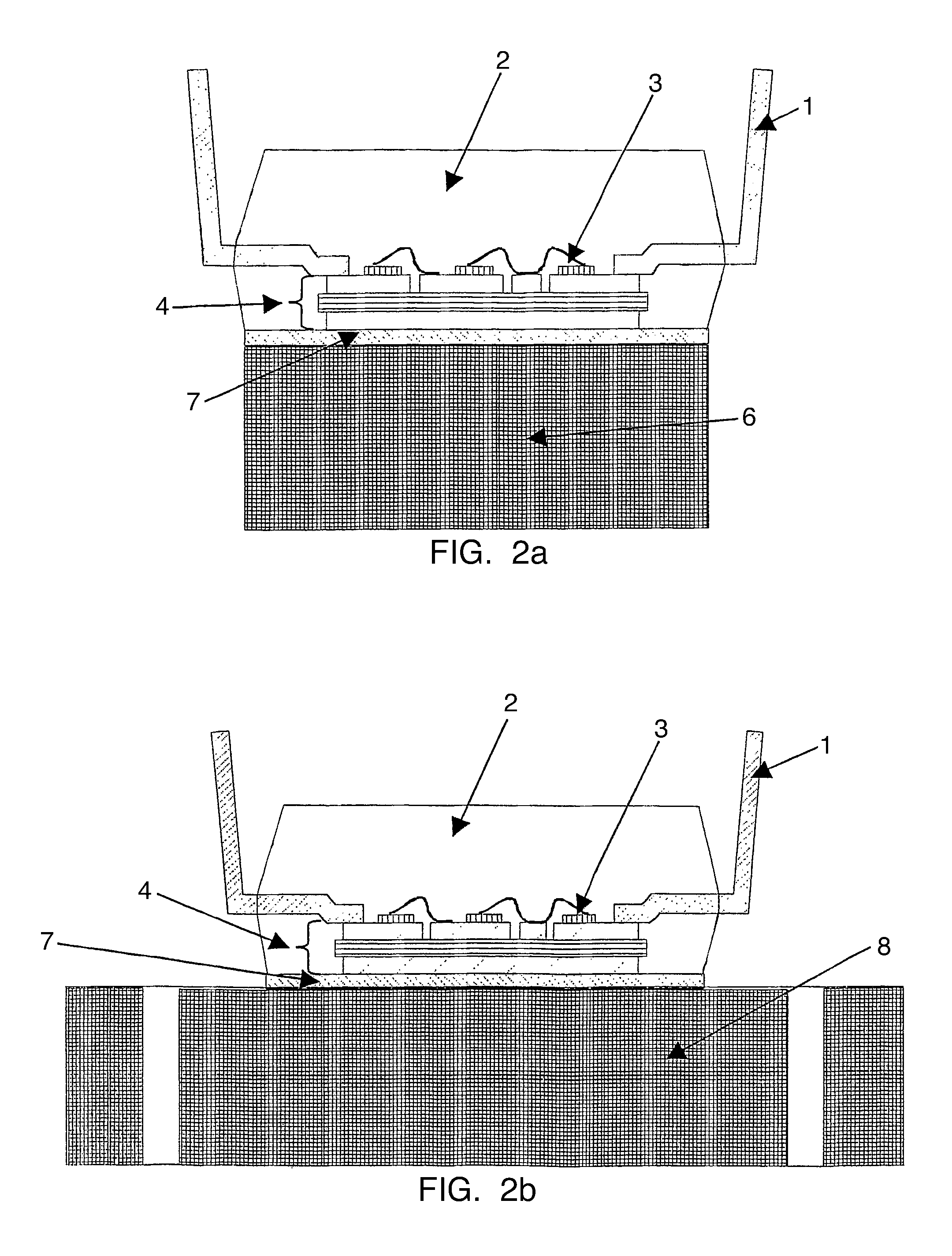Method for the low-temperature pressure sintering
a low-temperature pressure sintering and pressure sintering technology, which is applied in the direction of soldering apparatus, semiconductor/solid-state device details, manufacturing tools, etc., can solve the problems of inability to mount the manufacturing and testing step cost-savingly, the entire unit is deformed, and the surrounded unit with integrated heat sink plate deformation, etc., to achieve optimized heat spreading, and small volume of thermosetting plasti
- Summary
- Abstract
- Description
- Claims
- Application Information
AI Technical Summary
Benefits of technology
Problems solved by technology
Method used
Image
Examples
Embodiment Construction
[0031]The heat sink plate is now bonded in another connection process, that is the silver sinter pressure technology, to the completed mold-enveloped body of the electronic unit (and stable in the long term) (FIGS. 2a, 2b). The connecting layer of the sintered silver typically has a thermal conductivity of about 250 W / mK and is thus thermally and mechanically far superior to any heat conducting paste and any adhesive and solder.
[0032]a. The heat sink plate can now be selected to have a sufficient size, that is to say at least identical to the substrate size (primary function; high thermal capacity) or identical with the mold-enveloped body, or preferably also larger than the mold-enveloped body (heat spreading and increase in the thermal capacity).
[0033]b. The pressure sintering technology connects by means of temperature and pressure. The pressure permits to press the heat sink plate into a bed (=lower press ram) with a smaller radius than results after the finished connection afte...
PUM
| Property | Measurement | Unit |
|---|---|---|
| temperature | aaaaa | aaaaa |
| pressure | aaaaa | aaaaa |
| metallic | aaaaa | aaaaa |
Abstract
Description
Claims
Application Information
 Login to View More
Login to View More - R&D
- Intellectual Property
- Life Sciences
- Materials
- Tech Scout
- Unparalleled Data Quality
- Higher Quality Content
- 60% Fewer Hallucinations
Browse by: Latest US Patents, China's latest patents, Technical Efficacy Thesaurus, Application Domain, Technology Topic, Popular Technical Reports.
© 2025 PatSnap. All rights reserved.Legal|Privacy policy|Modern Slavery Act Transparency Statement|Sitemap|About US| Contact US: help@patsnap.com



